 |
|
HOME
|
US Navy -
ships
|
US Navy - air
units
|
USMC - air
units
|
International
Navies
|
Weapon Systems
|
Special Reports |
|
|
|
|
|
German Navy - Deutsche Marine Type 125 Baden-Württemberg class Frigate |
|
|
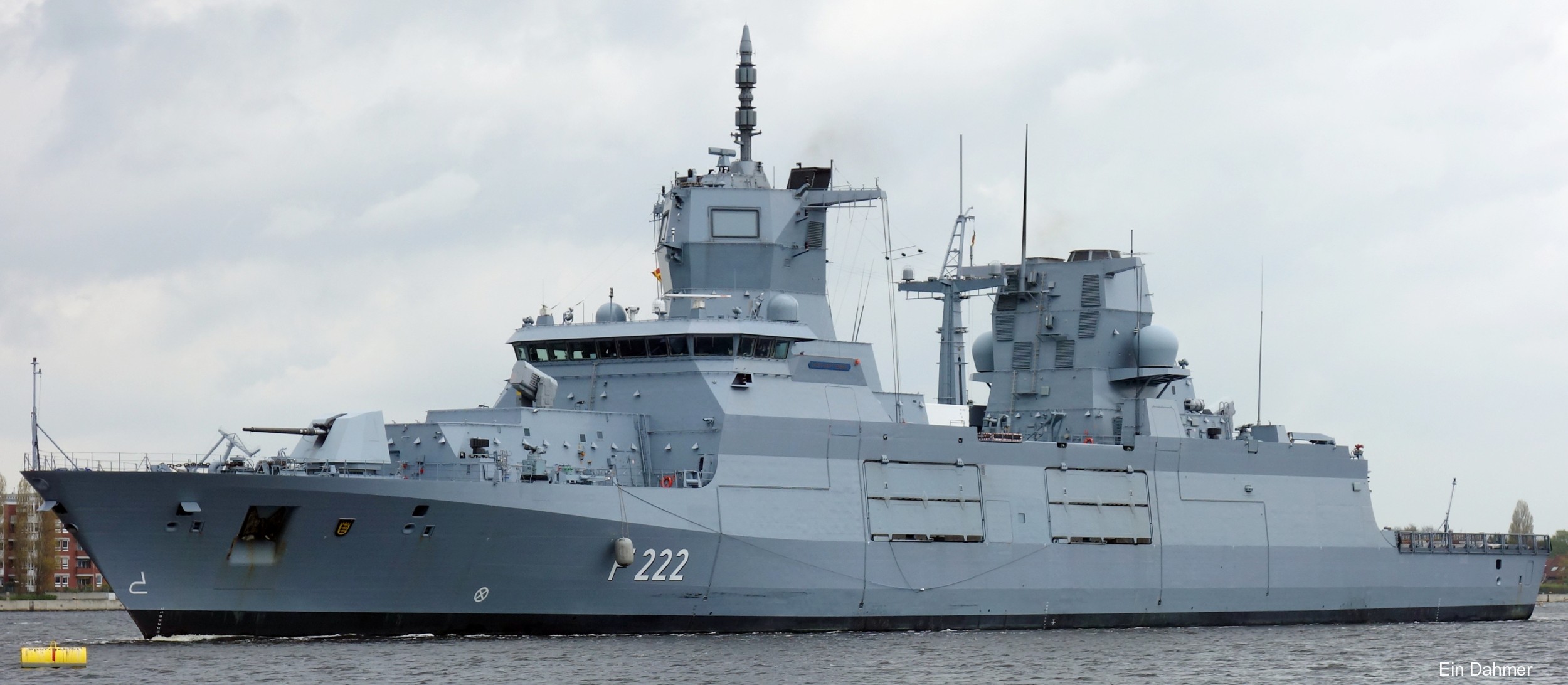 |
| 10/22 |
| Ships: |
|
F 222 FGS Baden-Württemberg (2019) F 223 FGS Nordrhein-Westfalen (2020) F 224 FGS Sachsen-Anhalt (2021) F 225 FGS Rheinland-Pfalz (2022) |
| Specifications: |
|
Builder: Thyssen-Krupp Marine Systems & Lürssen Shipbuilding Displacement: 7200 tons (full load) Length: 149.5 meters (490 feet 7 inches) Beam: 18.8 meters (61 ft 8 in) Draft: 5 meters (16 ft 5 in) Speed: 20 knots (37 km/h) on diesels only / 26 knots (48 km/h), max. Range: 4000 NM (7400 km) Complement: 120 standard crew + 70 embarked Propulsion: CODLAG (Combined Diesel-Electric and Gas) 1 x General Electric LM2500 Gas Turbine (20MW) 2 x Electric Motors (4.7 MW each) 4 x MTU 20V 4000 M53B Diesel Generators (2.9 MW each) 3 x Gearboxes (one for each shaft and one to crossconnect the gas turbine to them) 2 shafts, 2 controllable pitch propellers 1 x bow thruster (1 MW) 31600 kW (42964 hp) total power Armament: 1 x OtoMelara/Leonardo 127/64LW (5"/ 127mm / 64-caliber) gun with guided VULCANO ammunition 2 x Mk.141 missile launcher for 8 x RGM-84 Harpoon SSM (interim solution) 8 x RBS-15 SSM missiles (planned) 2 x MLG27 27mm machine gun systems 5 x OtoMelara/Leonardo Hitrole-NT 12,7mm remote controlled autocannons 2 x Mk.49 missile launching system for RIM-116 Rolling Airframe Missiles (RAM) Aviation: flight deck & hangar for 2 x NH90 naval helicopters Systems: 1 x Cassidian/Hensoldt TRS-4D Active electronically scanned array (AESA) radar Raytheon/Anschütz Navigation Radar Hensoldt MSSR 2000I & LTR 400 IFF system Mode 5/S Rheinmetall Defence MSP 600-125 electro-optical tracker Diehl Defence SIMONE (360° Ship Infrared Monitoring Observation and Navigation Equipment) GEDIS RESM/CESM KORA-18 electronically intelligence Link 11, Link 16 and Link 22 tactical datalink Atlas Elektronik Cerberus Mod.2 MTDS (mobile diver detection sonar) TKWA/MASS Multi Ammunition Softkill System |
|
|
|
The F125 Baden-Württemberg-class
frigates are a class of frigate of the German Navy, which is design
and constructed by ARGE F125, a joint-venture of Thyssen-Krupp and
Lürssen. The Baden-Württemberg-class are officially classified as
frigates but in size they are comparable to destroyers, since, with
a displacement of more than 7,200 tons, they will be the biggest
class of frigate worldwide. They are to replace the Bremen class. In contrast to the Bremen class, which were built with Cold War-era scenarios in mind, the Baden-Württemberg-class frigates will have much enhanced land-attack capabilities. This will better suit the frigates in possible future peacekeeping and peacemaking missions. For such reasons, the frigates will also mount non-lethal weapons. General characteristics: Major design goals are reduced radar, infrared and acoustic signatures (stealth technology), something that was introduced to the German Navy with the Brandenburg-class frigate and was further developed with the Sachsen-class frigate and Braunschweig-class corvette. Other important requirements are long maintenance periods: It should be possible to deploy Baden-Württemberg-class frigates for up to two years away from homeports with an average sea operation time of more than 5,000 hours per year (that's nearly 60%) which includes operation under tropical conditions. For this reason, a combined diesel-electric and gas arrangement has been chosen for the machinery. This allows the substitution of large and powerful diesel engines for propulsion and sets of smaller diesel generators for electric power generation with a pool of med-sized diesel generators, reducing the number of different engines. To enhance survivability of the frigates, important systems are laid out in the two island principle, i.e. present at least twice at different places within the ship. This is also visible in the superstructures, which are split in two larger pyramidal deckhouses. The aerials of the Cassidian TRS-4D Active electronically scanned array radar will be distributed over the two pyramids. This will ensure that the ship remains operational in case of severe damage, such as accidents or enemy action. It will also allow the frigates to keep station if needed when something breaks down and no replacement is available. An initial batch of four frigates was ordered by the German Navy on 26 June 2007. The initial batch of four ships costs around 2.2 billion Euros. In April 2007, a contract with Finmeccanica was signed for delivery of Otobreda 127 mm Vulcano main guns as well as remote-controlled light gun turrets for the Baden-Württemberg-class. The initially considered 155mm MONARC gun, as well as the naval GMLRS rocket launcher, were dropped due to problems with the navalization of these land-based systems. The deal with Oto Melara had become opportune, because Germany still had counter trade obligations towards Italy, as Italy had purchased two German U212A class submarines. The Baden-Württemberg-class frigates are equipped with ten guns for defence against air and surface targets. The vessels are also armed with non-lethal weapons, such as water cannons and searchlights for non-provocative deterrence and defence. Problems: The F125 Baden-Württemberg-class frigates currently has several problems. These problems include a persistent list to starboard and the fact that the ship is dramatically overweight, which would limit its performance, increase its cost of operation, and most importantly, negatively impact the Deutsche Marine's ability to add future upgrades to the somewhat sparsely outfitted vessel. Furthermore, there are also problems with the frigate’s operations room from where the highly-automated ship will be controlled. As a result the German defense procurement agency BAAINBw has refused to commission the FGS Baden-Württemberg, the lead ship of F125 Baden-Württemberg-class. This is the first time in German naval history that the BAAINBw has refused to commission a ship and returned it to its builder. source: wikipedia |
|
images for more images go to the individual ship's page |
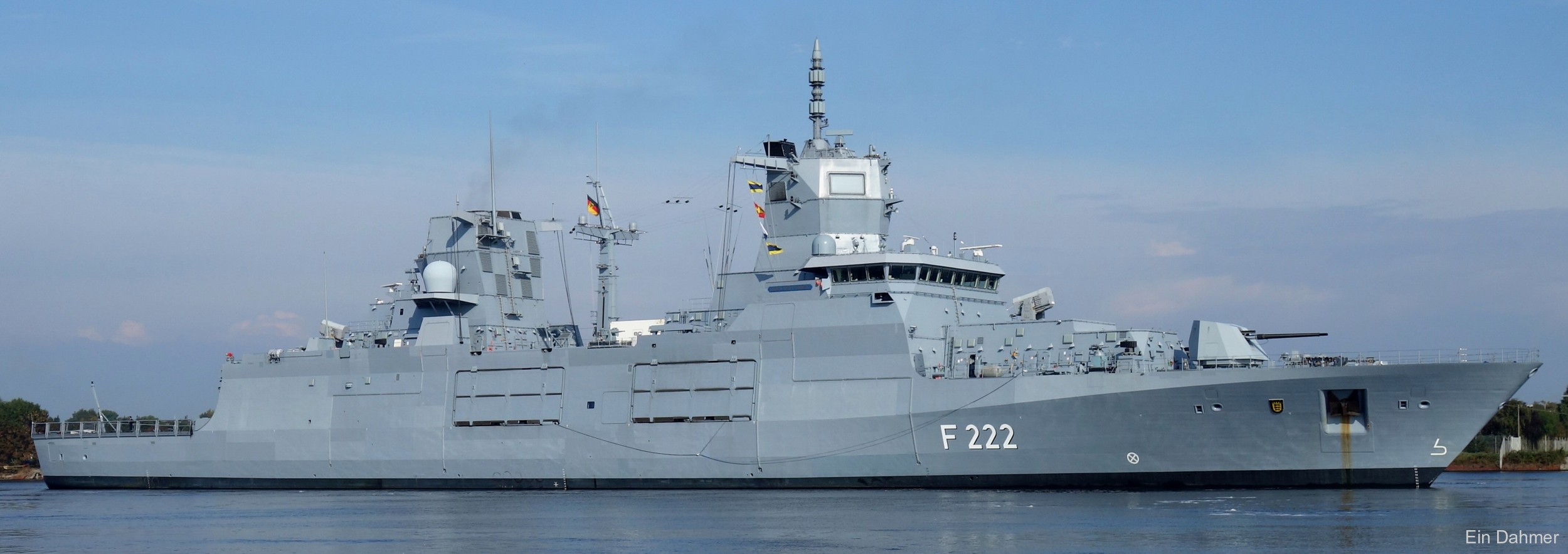 FGS Baden-Württemberg (F 222) 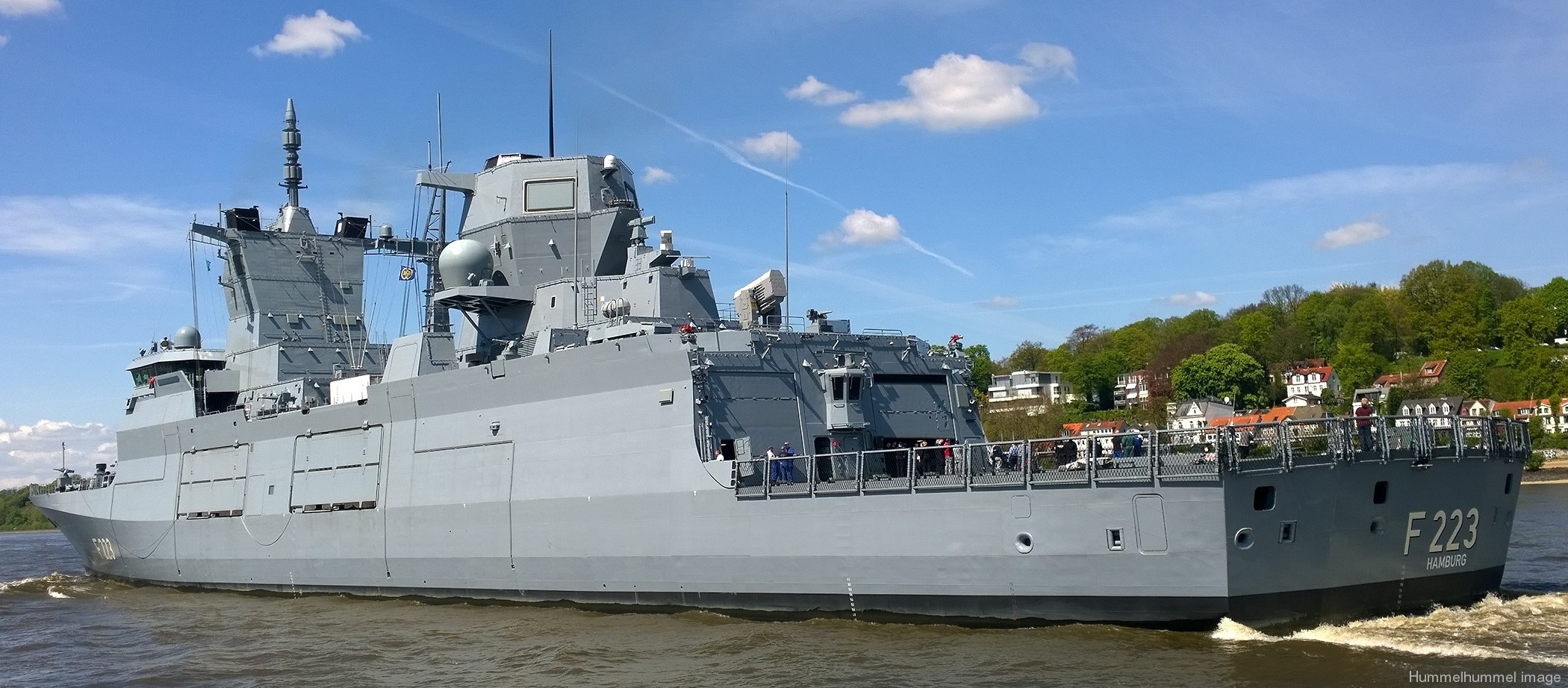 FGS Nordrhein-Westfalen (F 223) 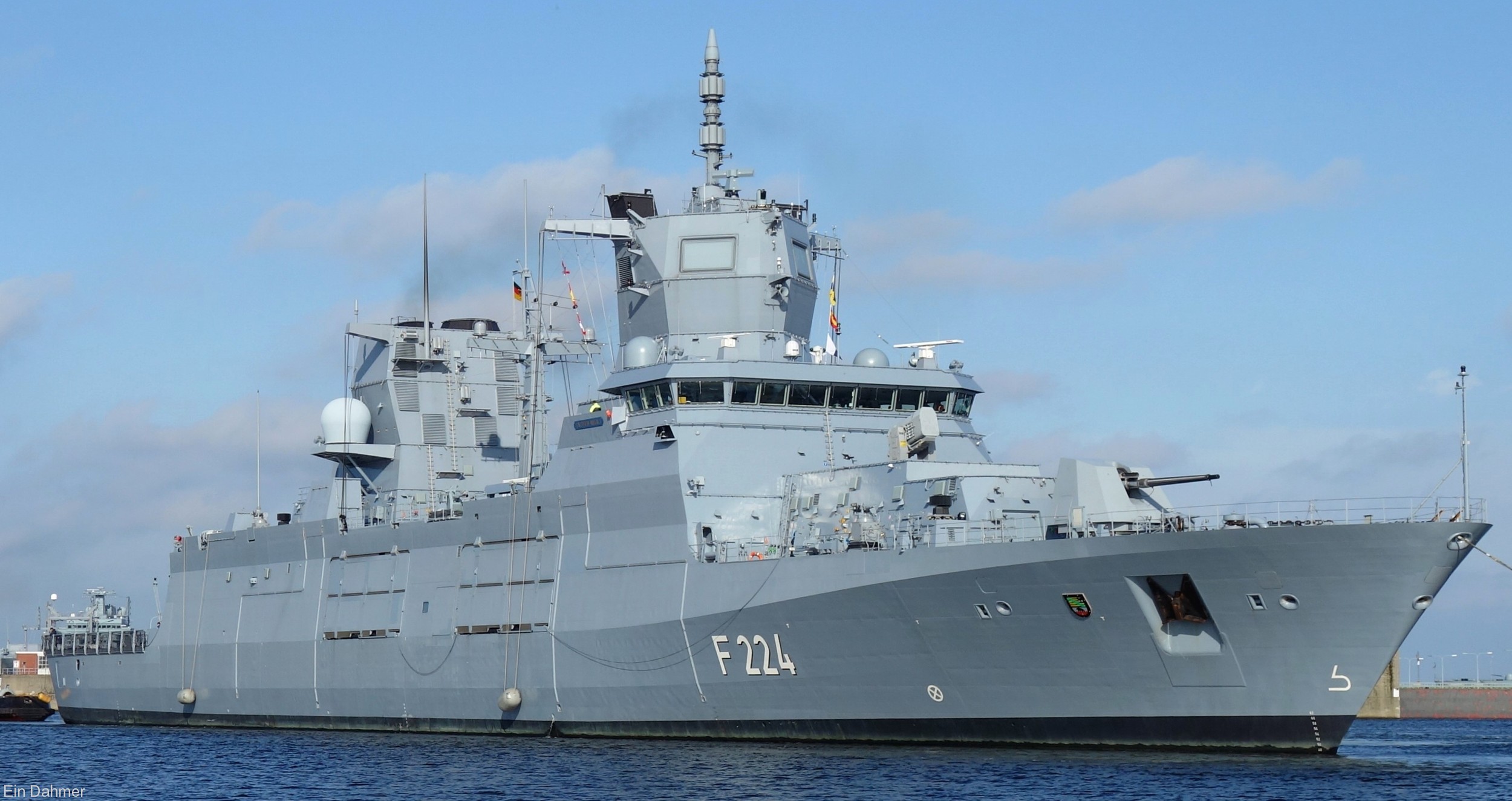 FGS Sachsen-Anhalt (F 224) 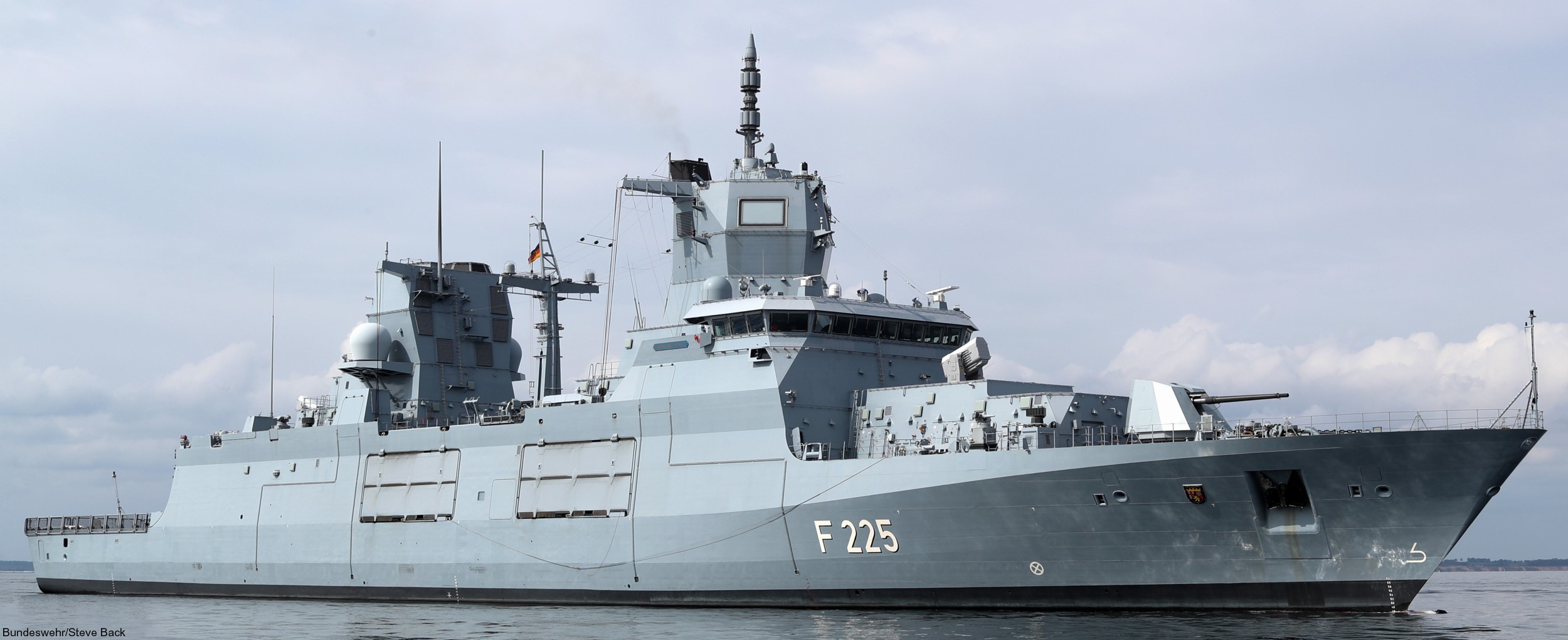 FGS Rheinland-Pfalz (F 225) 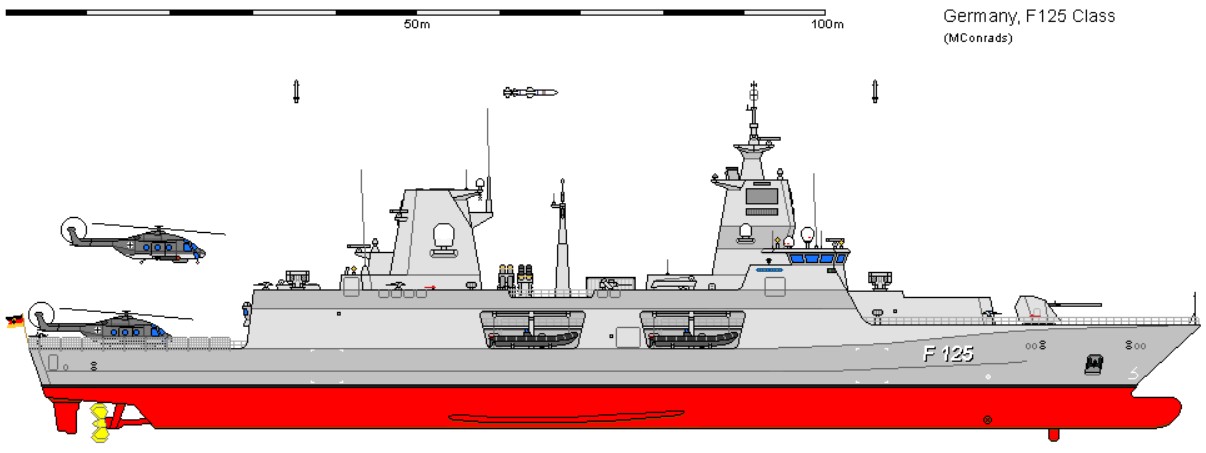 |
|
|
|
|
seaforces.org
|
German
Navy start page
| |